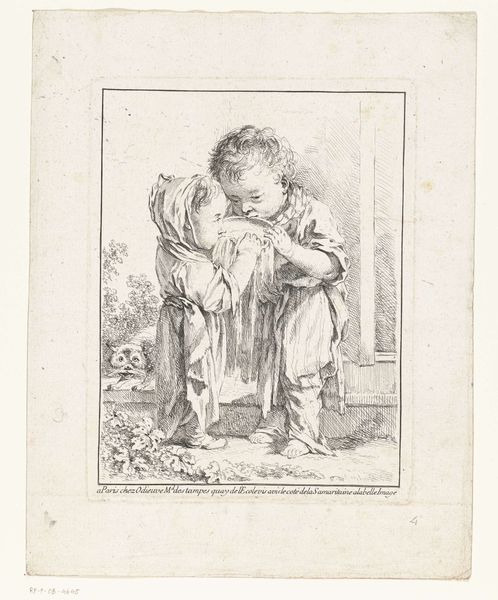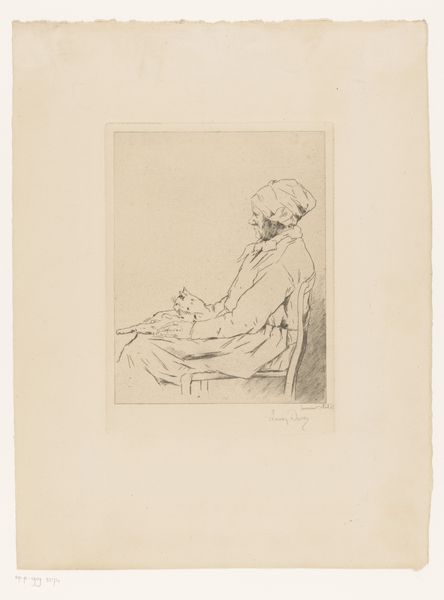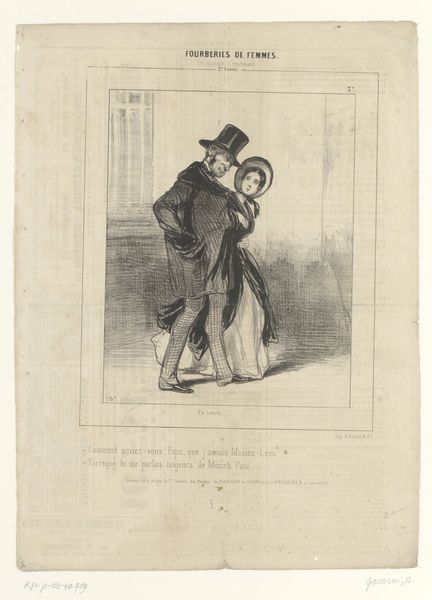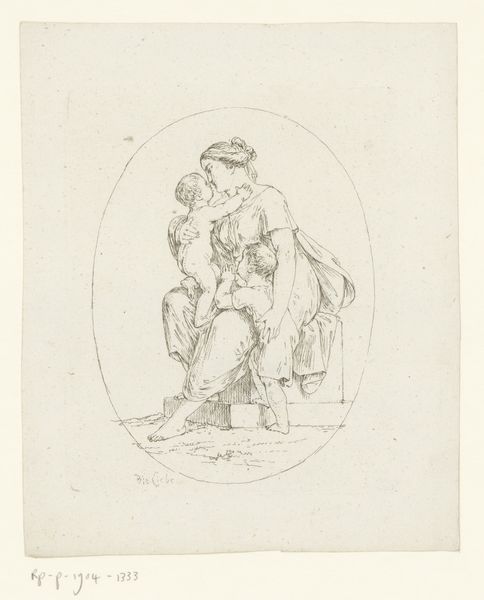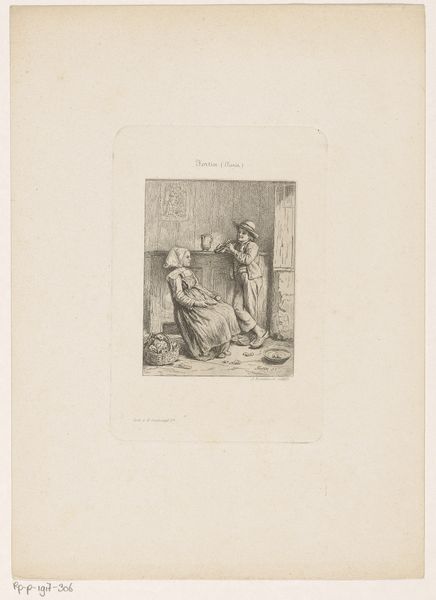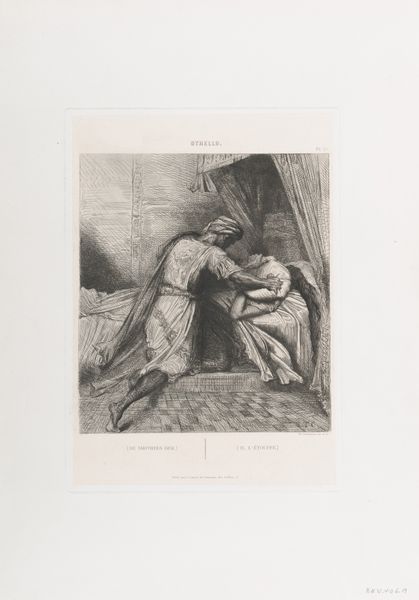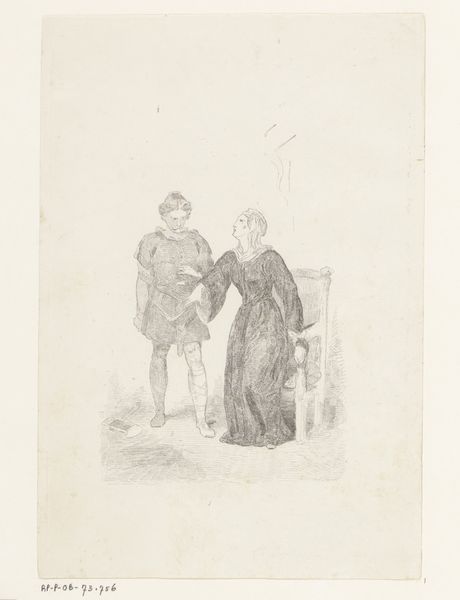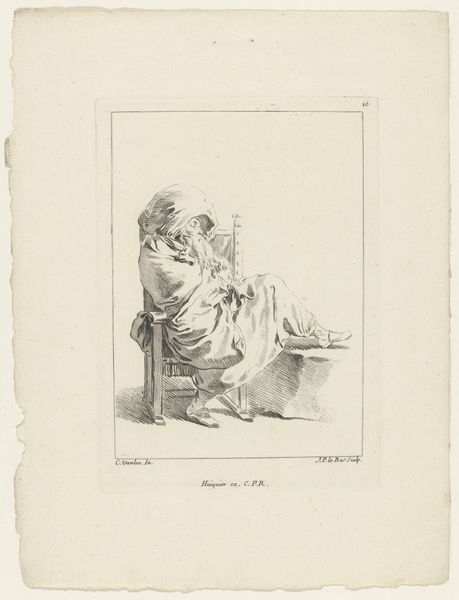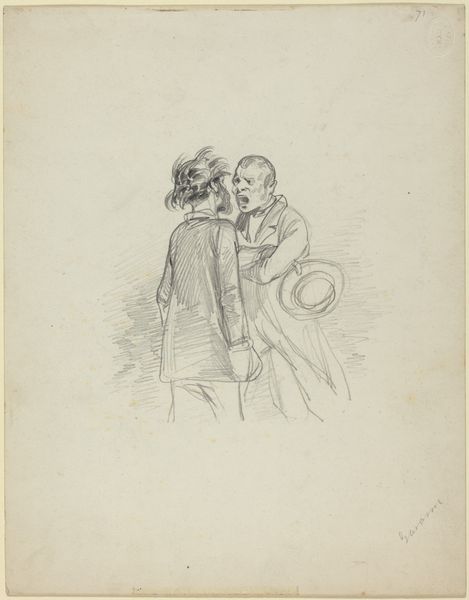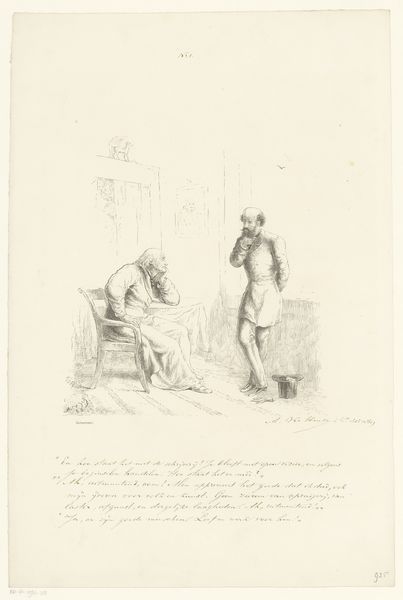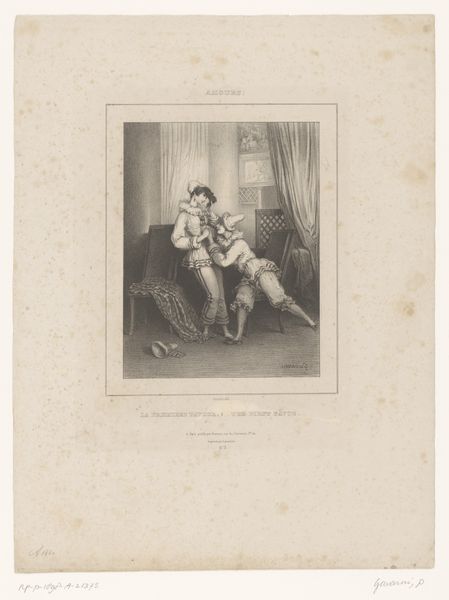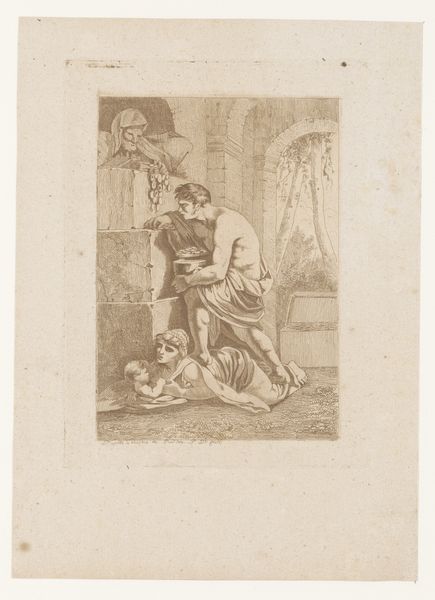
Mr. Wray's Cash Box; or, The Mask and the Mystery 1852
0:00
0:00
Dimensions: 165 × 126 mm (plate); 297 × 217 mm (sheet)
Copyright: Public Domain
Curator: What a captivating scene! This etching, created by Sir John Everett Millais in 1852, is titled "Mr. Wray's Cash Box; or, The Mask and the Mystery" and resides here at The Art Institute of Chicago. Editor: It's quite stark, isn't it? Almost severe in its simplicity. I'm immediately drawn to the contrast between the dark lines defining the figures and the blankness of the background. The artist's choices regarding paper material and etching technique, how they have aged since 1852, are significant, but what was the access to these raw materials and specialized artisan know-how at that time? Curator: The austerity certainly mirrors the Pre-Raphaelite's ethos. They sought a return to what they considered the sincerity and simplicity of pre-Renaissance art. The mystery suggested in the title must refer to something societal since their compositions reflected not only painterly innovation but also social awareness. Do the two figures symbolize a form of oppression or suppression? Editor: I think the production techniques used play an important role in understanding this, though. As an etching on paper, prints were intended for dissemination. Its potential availability enabled commentary and circulation throughout England's socio-economic classes. Perhaps a sign of new roles for artists like Millais during that transformative moment in time. What are they saying about production within the British machine? Curator: Indeed, the affordability of prints democratized art, enabling social commentary on a broader scale. Millais was part of a new generation exploring art's role in societal discourse. Perhaps these seemingly regular figures point to broader issues like class and economic struggles prevalent within English society and those pressures played out in people’s real lives. Editor: The materiality is quite powerful here as the simplicity allows the story being presented, including who has access, who could reproduce or circulate the artwork, to add layers of potential analysis. I wonder how access to cash-boxes like this were socially constructed too. Curator: This piece invites us to look beyond the surface, delving into Victorian England's social fabric through the lens of these skillfully etched lines. Millais' social observations have secured his influence in romanticism for centuries. Editor: Agreed. "Mr. Wray's Cash Box; or, The Mask and the Mystery" pushes us to understand this work, through technique, history, social commentary and perhaps its largest success may stem from Millais' masterful employment of print and etching processes.
Comments
No comments
Be the first to comment and join the conversation on the ultimate creative platform.
